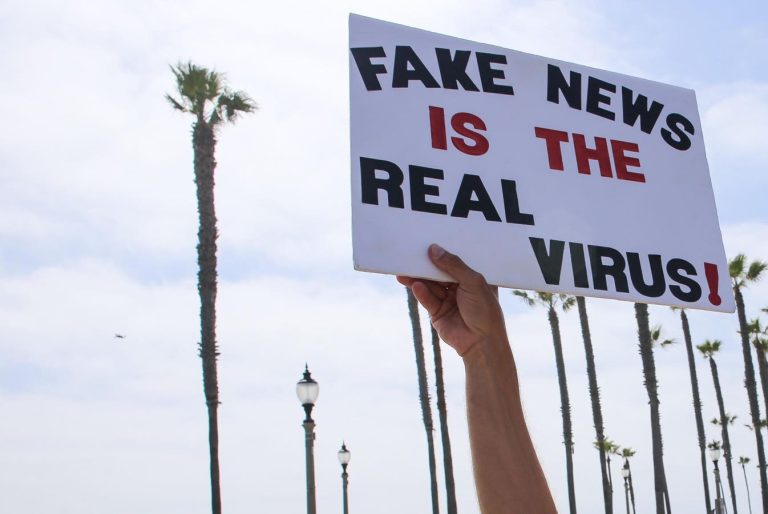The Escalating Threat of Digital Disinformation: A 21st-Century Virus
The digital age has ushered in unprecedented connectivity, but this interconnectedness has also created fertile ground for the rapid spread of disinformation. Like a virus, manipulated content infiltrates online platforms, infecting public discourse and posing a significant threat to individuals, organizations, and even national security. This disinformation, often propagated by coordinated networks employing sophisticated tactics like bots, fake accounts, and algorithmic manipulation, aims to erode trust, amplify polarization, and manipulate everything from election outcomes to stock prices. These "attackers," as they are often termed, are not merely individuals expressing dissenting opinions; they are organized entities strategically deploying deceptive methods to achieve specific, often malicious, objectives.
The pervasiveness of this digital manipulation is alarming. While major social media platforms like Facebook, X (formerly Twitter), and TikTok are common breeding grounds, disinformation also thrives in smaller, more intimate online communities, including WhatsApp groups, product review sections, and gaming platforms like Discord. Essentially, any platform where communication and information sharing occur becomes a potential target. This widespread dissemination makes it crucial to develop effective countermeasures.
Combating Disinformation with Digital Tools: A Complex Endeavor
The digital nature of these attacks suggests a logical solution: combating them with digital tools. Companies are developing sophisticated technologies to monitor online conversations, identify patterns indicative of coordinated disinformation campaigns, and trace the sources of these manipulations. These tools can analyze vast amounts of data, including text, images, and videos, to detect suspicious activity. Imagine being able to identify a coordinated effort to undermine a company’s stock value or detect online chatter hinting at a potential attack against a minority group. Such early detection could enable timely intervention by social media platforms, law enforcement, or other relevant authorities.
However, the practical implementation of these tools is fraught with challenges. The sheer volume of online content necessitates advanced algorithms and significant computing power. Moreover, the nuances of language, cultural context, and evolving online slang require skilled human analysts with domain expertise to interpret the data accurately. These resources, both technological and human, come at a cost, making comprehensive monitoring a significant investment.
Technological and Practical Hurdles in the Fight Against Disinformation
The cost of implementing these advanced solutions is a significant barrier. Employing cutting-edge technology and expert analysts is expensive, forcing organizations to prioritize their monitoring efforts and focus on the most vulnerable areas. No entity can afford to scan the entirety of the internet constantly. Even when disinformation is identified, removing it presents another challenge. Social media platforms may be uncooperative or slow to act, particularly when the content falls into a gray area between legitimate opinion and harmful manipulation. Even with clear evidence of coordinated inauthentic activity, removal is not guaranteed.
The speed and scale at which disinformation spreads pose a further obstacle. A single false post can go viral within hours, reaching millions of users before it can be effectively debunked or removed. The sheer volume of online content and the speed of its dissemination often overwhelm efforts to control its spread. Furthermore, the lack of widespread recognition of the severity of the problem hinders the development and adoption of more powerful countermeasures. While studies have shown the significant impact of disinformation on businesses, societal activities, and even political processes, the response from decision-makers has often been inadequate.
Bridging the Gap: Education, Technology, and Recognition
While technology plays a crucial role in combating disinformation, it is not a silver bullet. A multi-pronged approach is necessary. Education and media literacy are essential to equip individuals with the skills to critically evaluate online information and identify signs of manipulation. Just as people learn to discern healthy food choices or recognize phishing emails, they can be trained to spot the hallmarks of disinformation. This involves understanding common tactics used by manipulators, such as the use of emotionally charged language, the spread of conspiracy theories, and the creation of fake accounts and websites.
Simultaneously, organizations and governments must recognize the profound risks posed by disinformation and invest in robust strategies to enhance their resilience. This includes implementing the right technological solutions, developing clear procedures for identifying and responding to disinformation campaigns, and fostering collaboration between different stakeholders, including social media platforms, cybersecurity experts, and law enforcement agencies. Just like businesses protect their digital assets with firewalls and authentication systems, they must prioritize safeguarding their reputations and operations from the damaging effects of manipulated content.
The Future of Disinformation: A Call to Action
The fight against digital disinformation is a complex and ongoing battle. While technology offers powerful tools to detect and counter manipulation, it is not a panacea. Success requires a concerted effort across multiple fronts, including technological innovation, public education, and increased awareness among policymakers and business leaders. Recognizing disinformation as a significant threat and investing in comprehensive countermeasures is no longer optional; it is a necessity for protecting individuals, organizations, and the integrity of our information ecosystem. We must act decisively to build a more resilient and informed digital society, one capable of withstanding the insidious onslaught of disinformation. The stakes are too high to ignore.


